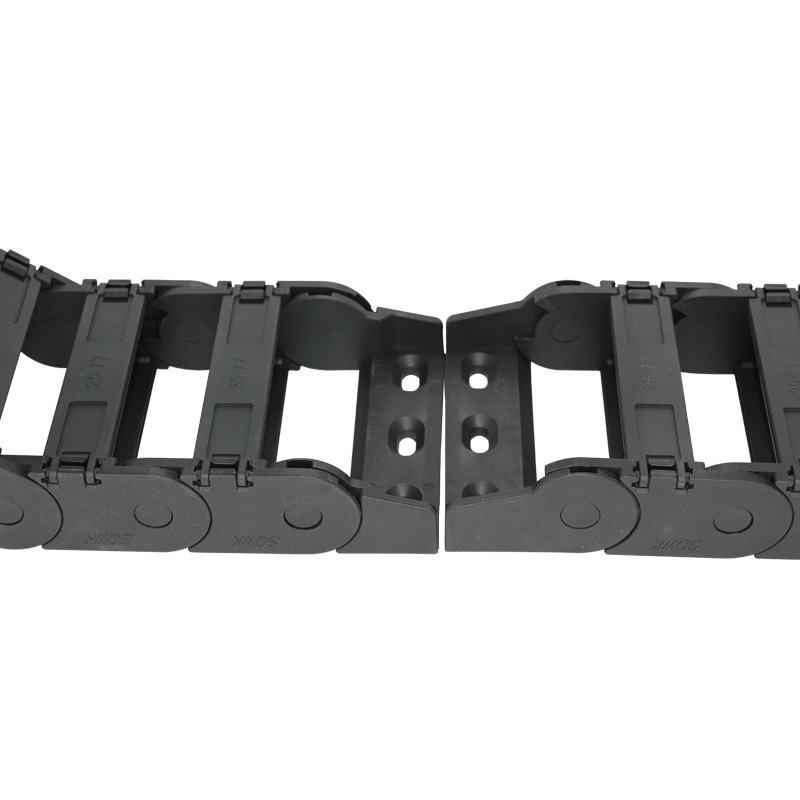Cable and Hose Management Solutions for Enhanced Equipment Mobility
Understanding Cable and Hose Carriers A Comprehensive Overview
In today's fast-paced industrial landscape, efficiency and organization are paramount. One area that has seen significant advancements is the management of cables and hoses, particularly through the use of cable and hose carriers. These sophisticated systems not only streamline operations but also enhance safety and reduce wear and tear on vital components. Let’s delve into what cable and hose carriers are, their benefits, applications, and considerations for choosing the right system.
What Are Cable and Hose Carriers?
Cable and hose carriers, also known as drag chains or energy chains, are systems designed to protect and organize cables, hoses, and other flexible connections in various industrial applications. They consist of a series of interconnected links that can flex and bend, allowing movement while keeping the cables and hoses in a controlled environment. Typically mounted on machinery or moving parts, these carriers ensure that the elements within them are not subjected to unnecessary wear, tangling, or damage during operation.
Benefits of Using Cable and Hose Carriers
1. Protection One of the primary advantages of cable and hose carriers is their ability to protect cables and hoses from mechanical wear, environmental factors, and chemical exposure. By enclosing these essential components, the carriers help to prolong their lifespan, ultimately saving on replacement costs.
2. Organization In industrial settings, where space can be at a premium, organization is key. These carriers provide a structured method for routing cables and hoses, reducing clutter, and simplifying maintenance tasks. A well-organized setup minimizes the time spent tracing and repairing faulty connections.
3. Flexibility Cable and hose carriers are designed to accommodate various movements, including rotational, linear, and vertical movements, making them suitable for dynamic environments. This flexibility is crucial for robotics, CNC machines, and assembly lines where precision and efficiency are vital.
4. Enhanced Safety By neatly organizing and protecting cables and hoses, these carriers also reduce the risk of accidents caused by tripping hazards or entangled components. This aspect is critical in maintaining a safe workplace, particularly in high-traffic areas.
Applications of Cable and Hose Carriers
cable and hose carrier

Cable and hose carriers are utilized in a wide range of industries, including
- Manufacturing In automated and robotic systems, these carriers facilitate smooth operation by guiding electrical power and communication lines. - Construction They are often used in heavy machinery, providing essential connections while allowing for movement without wear. - Marine and Aerospace In environments where exposure to harsh elements is a concern, these carriers protect cables and hoses from weathering. - Entertainment Stage rigs and theatrical setups benefit from cable carriers to streamline electronic connections for lighting and sound equipment.
Choosing the Right Cable and Hose Carrier
When selecting a cable and hose carrier, several factors must be taken into consideration
1. Type of Movement Assess the kind of movement your application requires. Different carriers are designed for different types of motion—linear, rotary, or a combination. 2. Load Capacity Evaluate the weight and diameter of the cables and hoses that will be routed through the carrier. Ensuring that the carrier can handle the load is crucial for optimal performance.
3. Environmental Conditions Consider the environmental aspects, such as temperature, exposure to chemicals, and potential for physical damage. Some materials might be better suited for harsh conditions than others.
4. Length and Size The size and length of the carrier should be sufficient to accommodate the full stretch of cables or hoses, allowing for movement without tension.
5. Installation and Compatibility Ensure that the chosen system is compatible with your existing machinery and easy to install. Often, pre-fabricated options are available for popular applications.
Conclusion
Cable and hose carriers play an indispensable role in modern industrial practices, offering a robust solution to cable and hose management. By protecting vital components, improving organization, and enhancing safety, they contribute significantly to operational efficiency. With various options available, businesses can tailor their approach to cable and hose management, ensuring that they meet the specific demands of their applications while minimizing downtime and maintenance costs.








